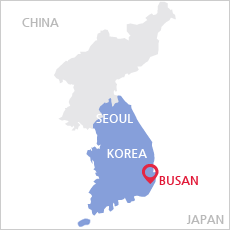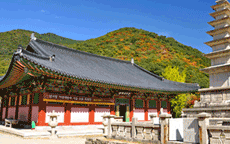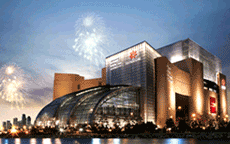
Dongseo UniversityBusan, Korea
Busan, Korea
Location
Busan is South Korea’s second largest metropolis and is located roughly 330 km (200 miles) southeast of the capital of Seoul. It has a population of about 3.6 million people, excluding surrounding areas, and an area of about 750 square kilometers.

Attractions
Beaches
Haeundae is the largest of Busan’s four main beaches. In peak season, it becomes one of Asia’s most popular beaches, and many local residents prefer some quieter alternatives. One of these is Gwangali beach, which is the second most popular beach in the city. Its “Diamond Bridge” spans across the harbor offering an iconic view.

Vistas
Spectacular views can be seen from various locations around the city, including Geumjeong Mountain (accessible by cable car) and Busan Tower (in Nampodong). Another great location is Taejongdae, which offers views of the cliffs and ocean meeting along the coast of Busan.

Historic sites
Busan has many important historic sites, some of which are Buddhist temples. Visitors can experience the traditional architecture and natural beauty of Korea at temples like Beomeosa or Haedong Yonggungsa. Other visitors may be interested to check out the Busan Modern History Museum.

Shopping
Busan has six department stores, including the world’s largest, aptly named Shinsegae Centum City, meaning “new world.” This giant shopping center has a luxury spa, a full-sized skating rink, a golf driving range, multiple cinemas and countless retail stores all under one roof. For a more authentic local experience, visitors can take a walk around Kukje Market and the nearby Jagalchi Fish Market.

External links
To learn more about Busan, please follow the links below.
Tourism
For information about Korean tourism including maps, places of interest and historical information, try these links:
- Korea Tourism Organization http://english.visitkorea.or.kr/enu/index.kto
- Busan Metropolitan City http://english.busan.go.kr/
- Busan Tourism https://www.bto.or.kr/eng/Main.do
Events
For information about events including forums, classifieds, and dining/entertainment guides, try these links:
Travel
For information about Busan travel, including maps, try these links:


